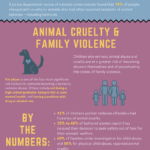The juxtaposition of cruelty and compassion forms a complex canvas on which human motivations are vividly illustrated. While it is universally acknowledged that compassion is a desirable and virtuous trait, many societies exhibit an alarming affinity for cruelty. This inclination may manifest in various contexts, from the commonplace acceptance of animal cruelty to the sensationalism of violent media. Such behaviors compel us to ponder: why do people sometimes seem to embrace cruelty over compassion?
One prevalent observation is the human intrigue with power dynamics. Cruelty can often be perceived as a manifestation of control. In many aspects of life, whether in interpersonal relationships or societal hierarchies, the capacity to exert dominance can evoke a sense of satisfaction. This dominion, however unyielding, often elicits admiration among peers. The allure of watching an individual wield power—sometimes at the expense of others—can be intoxicating, facilitating an environment where compassion is overshadowed by an insatiable thirst for dominance.
Moreover, cruelty, whether tacit or overt, can serve as a misguided form of entertainment. Society has witnessed the rise of a voyeuristic culture that revels in the grotesque. Reality television, sensational news reporting, and violent video games often thrive on shock value, reinforcing the notion that cruelty is more amusing than empathy. This desensitization to violence and suffering creates a feedback loop where audiences are compelled to seek out more intense experiences, establishing cruelty as a staple of modern entertainment. Consequently, the attention garnered by cruelty may eclipse the quiet and often overlooked acts of compassion.
Furthermore, there is an unsettling psychological phenomenon known as schadenfreude, which refers to the pleasure derived from another’s misfortune. This concept reveals a darker facet of the human psyche—one that finds gratification in the downfall or suffering of others. Such feelings may stem from insecurity or feelings of inadequacy, leading individuals to feel elevated when witnessing the plight of those they perceive to be better off. Consequently, this can engender a mindset that favors cruelty over compassion, as individuals indulge in the fleeting satisfaction that can arise from exploitation rather than uplifting others.
Ethnic and cultural biases also play a pivotal role in this dynamic. Discrimination, whether based on race, gender, or species, allows individuals to cultivate a sense of superiority, often justifying cruel behaviors as acceptable—if not necessary. This happens not only in human-to-human interactions but also extends towards animals. The commodification of animals, whether in sports, entertainment, or consumption, relies heavily on a lack of empathy and an ingrained belief in human superiority. This dismissal of the intrinsic value of all sentient beings facilitates cruelty and undermines acts of compassion that challenge the status quo.
The digital landscape further complicates the conversation. The anonymity afforded by social media platforms enables individuals to express cruel sentiments without facing immediate repercussions. Cyberbullying, harassment, and merciless derision are rampant as many opt to prioritize vitriolic commentary over constructive discourse. This culture of cruelty often engenders a sense of community among perpetrators, as they bond over shared disdain while ostracizing those who advocate for kindness. Such social dynamics cultivate environments that exacerbate the allure of cruelty versus the soft, often less popular path of compassion.
However, it is vital to analyze systemic factors contributing to this propensity. Inequities in wealth distribution, lack of education, and inadequate mental health resources can all exacerbate individual tendencies towards cruelty. For many, exhibiting cruel behaviors may serve as a defense mechanism amidst feelings of hopelessness or frustration stemming from their circumstances. When individuals are deprived of sufficient support, they may resort to cruelty as a means of venting their frustrations or delegitimizing the suffering they themselves endure.
Compassion, contrastingly, necessitates a more profound commitment to selflessness and vulnerability. It requires individuals to confront their own discomfort while extending understanding and support to others. In a culture that often prioritizes self-interest and aspiration, compassion can be perceived as a weakness—a notion that further complicates its proliferation. It urges individuals to question their values, challenge societal norms, and sometimes stand against prevailing opinions, a daunting undertaking that may discourage many from choosing compassion over cruelty.
Despite these daunting observations, it is crucial to acknowledge that compassion does exist and thrives in various forms within many communities. It emerges in grassroots movements advocating for animal rights, community service projects, and political activism aimed at social justice. Acts of compassion can collectively foster a sense of belonging, empathy, and moral integrity. These moments serve as the antithesis to cruelty, illustrating the potential for humanity to prioritize kindness even in an environment that often seems hostile to it.
Thus, understanding why cruelty captures attention and perhaps affection more than compassion is pivotal. It lies not only in the allure of dominance and the fleeting gratification of schadenfreude but also serves as a reflection of societal ills, cultural biases, and the psychological complexities of human behavior. While the fascination with cruelty can be disheartening, recognizing its roots offers significant insights into restructuring societal values and nurturing an environment where compassion may flourish. Ultimately, it is through fostering understanding and challenging the prevailing narrative that humanity can pivot towards a more compassionate future.










